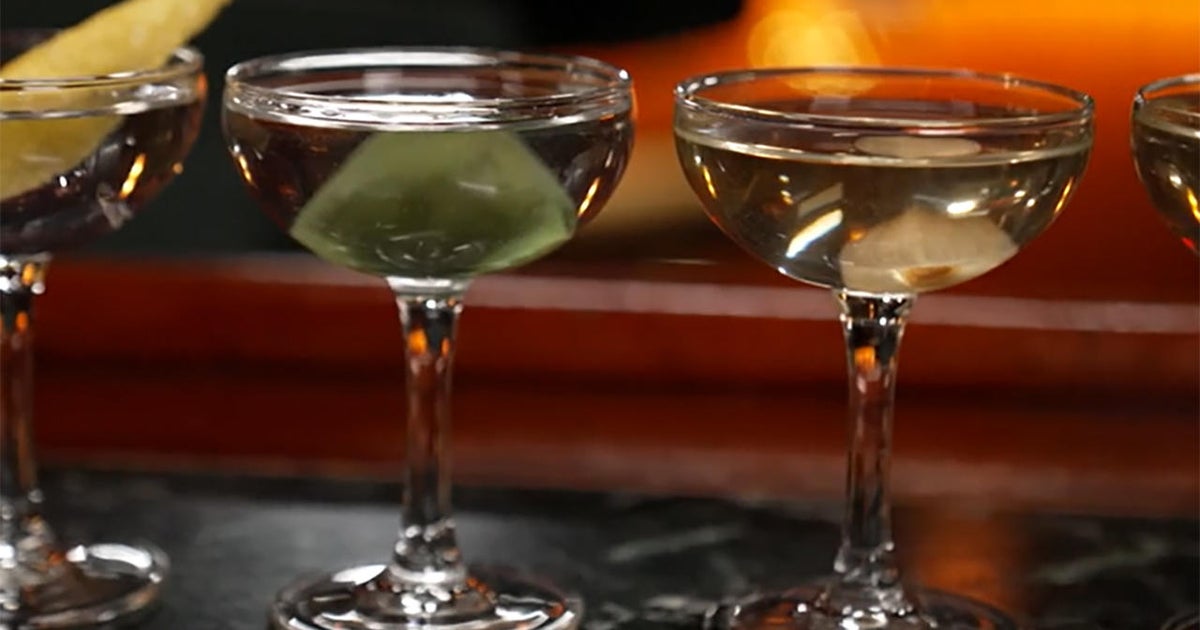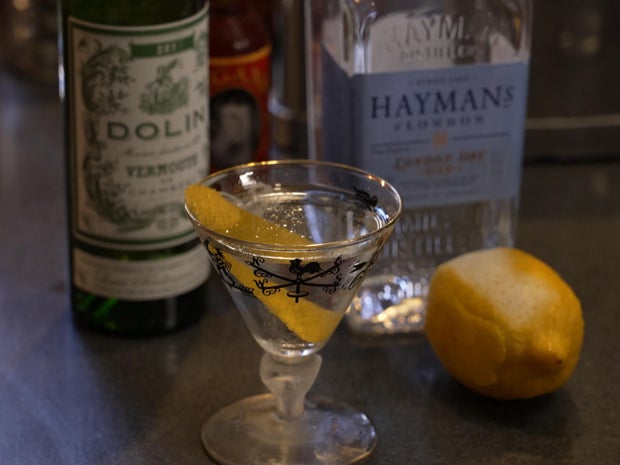CBS News
Washington’s princess: How former first daughter Alice Roosevelt captivated America

As the 2024 election nears, “60 Minutes: A Second Look” turned to the archives for a look at Alice Roosevelt Longworth, a former first daughter who captivated America for decades.
The American public was enthralled with President Theodore Roosevelt’s daughter from 1901, when she was just a teenager in the White House, until her death in 1980. Alice spent decades in the spotlight, but she never appeared on U.S. television until her 1969 interview on “60 Minutes.” She also sat down with “60 Minutes” in 1974. During her 1969 interview, Alice, then 85, dished about almost every president of the 20th Century.
She called Warren Harding “probably the most inferior man,” Benjamin Harrison a “little squat man with a beard,” and William Howard Taft a “nice, fat, old bird.”
“She has, at 85, lost none of the wit and high spirits that made her such a popular figure during the presidency of her father, Theodore Roosevelt,” Harry Reasoner, one of the original “60 Minutes” correspondents, said at the time.
Alice the first daughter
Alice was 17 when her father, then vice president, ascended to the presidency in 1901 after the assassination of William McKinley.
Just like Beyoncé and Madonna today, Americans knew her by a single name: Alice. She was also sometimes called Miss Alice or Princess Alice.
People named their babies after her and there was even a color, Alice Blue, named after her, according to Stacy Cordery, author of “Alice: Alice Roosevelt Longworth from White House Princess to Washington Power Broker.”
“She was very much the personification of the zeitgeist of the new century,” Cordery told “60 Minutes: A Second Look” host and CBS News correspondent Seth Doane. “Young Americans in particular loved this. And they copied her and they followed her. And after a while when she appeared in public, crowds gathered around her.”
Alice was known to carry a copy of the Constitution and a green garter snake named Emily Spinach around in her purse.
“When the dinner parties got boring, she would open her purse and let Emily Spinach out to slither along the table and liven things up,” Cordery said.
She also married Nicholas Longworth, who later became speaker of the House, at the White House in 1906. Her wedding has been called the biggest and most impressive of all White House weddings.
Alice’s granddaughter
Alice had a long-term affair with Idaho Sen. William Borah. She had a daughter, Paulina, with the senator and later also raised Paulina’s daughter, Joanna Sturm.
Sturm was with Alice for both her 1969 and 1974 interviews with “60 Minutes.” She’s one of the only people still alive to have known the former first daughter so well. Sturm was 10 when her mother died and she went to live with Alice; she stayed there for 25 years.
“She had many characteristics that are gone forever,” Sturm said of her grandmother. “Nobody had the same accent. Nobody knows poetry any more.”
Sturm’s Washington home — about a mile from the mansion where Alice once lived — is filled with memorabilia that once belonged to Alice. Sturm’s favorite? A narwhal tusk that may have been given to “Grammy” as a wedding president.
Sturm also has a pillow of Alice’s, which was a gag gift from a friend. Some of Alice’s signature wit is embroidered on the pillow: “If you haven’t got anything good to say about anyone, come and sit by me.”
It’s indicative of an “acerbic quality” her grandmother had, Sturm said.
Alice’s influence as a power broker
Alice spent decades entrenched in the world of politics and entertained guests — both Democrats and Republicans — at her home. Sturm still keeps the oak dining table Alice entertained at.
“Why do you find politicians so interesting? You’ve had thousands of them through this house,” CBS News’ Eric Sevaried asked Alice in 1974.
Alice replied it “just amuses” her.
“I like to see what they’re doing,” she told Sevaried. “What they do and how they behave and how they regard one another.”
As Cordery worked on her biography of Alice, she started to see Alice as a power broker.
“Her position as an insider in Washington, D.C. was wholly unique,” Cordery said. “She has friends in every department and every office.
Alice was encouraged to run for her husband’s seat after his death. She also had a newspaper column, and readers suggested she could one day become the first female vice president or president, but Alice opted to wield her political power behind the scenes.
“Lyndon Johnson quite liked Mrs. Longworth,” Cordery said. “Richard Nixon said Mrs. Longworth was his favorite dinner partner, but Jack Kennedy also said the same thing.”
“We need an Alice today.”
At the time of Alice’s second “60 Minutes” interview, the country was roiled by the Watergate scandal and President Nixon was just months away from resigning. Alice stood by Nixon while acknowledging the divisiveness in the country.
Alice brought politicians to her dinner table so that they could talk to one another, Cordery said.
“And it did not matter to her whether they were Democrats or Republicans or nothing. She liked to see the sparks fly, she once said,” Cordery said, adding, “I submit to you that one of the difficult things we have going on in the United States of America today is the fact that our legislators don’t talk to one another.”
Cordery feels “we need an Alice today.”
As for Sturm, well she isn’t sure what her grandmother would think of the political situation in the country today.
“I cannot even imagine,” Sturm said. “She could not, I think, conceptualize somebody like Trump. I mean, I think he is so beyond anything she could imagine. I just can’t even imagine it.”
CBS News
Serving up home-cooked dog food

Watch CBS News
Be the first to know
Get browser notifications for breaking news, live events, and exclusive reporting.
CBS News
What makes a martini a martini?

Watch CBS News
Be the first to know
Get browser notifications for breaking news, live events, and exclusive reporting.
CBS News
What makes a martini a martini?

Nowadays, what makes a martini a martini? Robert Simonson, who wrote a book about the martini, said, “It’s funny: it’s strict and loose at the same time.”
Ten Speed Press
Everyone seems to have an opinion about the cocktail: “Ingredients, proportions, garnishes – it’s all subject to debate,” Simonson said. “I’m a purist. I would think it needs to be gin and vermouth. But I’m willing to bend and say, ‘Okay, vodka and vermouth as well.’ [However,] if there’s no vermouth in there, I don’t know how you can call it a cocktail.”
Simonson says the martini was probably named after a vermouth company. It was invented in America in the 1870s or ’80s when bartenders mixed gin with vermouth, a fortified wine made with herbs and spices. “It’s a very big player in cocktail history,” he said.
In the early 20th century, the “very-dry” martini became very-popular: Ice cold gin or vodka, garnished with a lemon twist, or an olive, or an onion, but only a little vermouth (or maybe not even a little).
Samantha Casuga, the head bartender at Temple Bar in New York City, says the reason why many people might not want vermouth in their martini is because, for years, vermouth was stored improperly. “It should be in the fridge,” she said.
CBS News
Casuga’s classic martini is two parts gin, one part vermouth, with a twist of lemon. She suggests that you probably shouldn’t order it the way James Bond does – shaken, not stirred. Casuga says she’s always stirring, but some people like the show behind the bar when a bartender shakes their cocktail. “Definitely, people love a good shake,” she said.
People also love to have a martini made just the way they want it. But Casuga understands why they might be so specific: “To have your own preferences, not only listened to and then executed, is, like, that’s luxury itself.”
Writer Robert Simonson says that a martini can also add a little luxury to your Thanksgiving. “It actually makes very good sense for Thanksgiving,” he said. “It will whet your appetite for the meal to come.
“There are very few American inventions more American than the martini. So, an American holiday, American drink.”
CBS News
For more info:
Story produced by Mary Raffalli. Editor: Remington Korper.
“Sunday Morning” 2024 “Food Issue” recipe index
Delicious menu suggestions from top chefs, cookbook authors, food writers, restaurateurs, and the editors of Food & Wine magazine.





